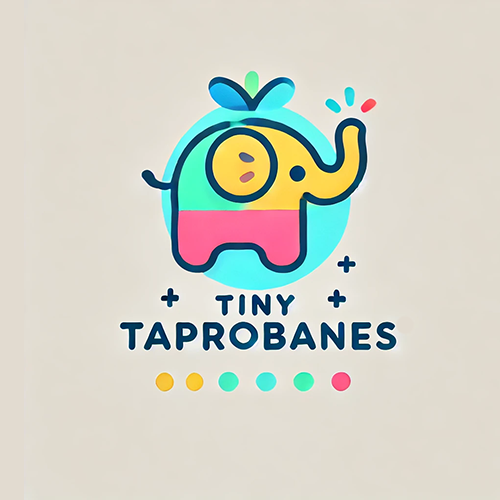What is yoghurt?
It is a form of milk that is fermented by bacteria.
When can yoghurt be introduced to babies?
Yoghurt can be given as soon as solids are started, the average age being 6months. It is composed of the exact first texture for babies. However, it has to be kept in mind that there is a vast difference between the yoghurt that we eat as adults and the yoghurt given to infants and toddlers.

Why offer yoghurt?
- Yoghurt has the perfect first texture for babies from right at the beginning of weaning.
- It is a good source of calories, calcium, fat, protein and iodine, which can be hard to get enough of, if your child doesn’t eat fish or dairy.
- Yoghurt can be offered easily mixed with curries, fruits, porridge, oats, etc.
- In Sri Lanka, the first recommended food is smashed rice to which pulses, fish, oil, vegetables are added in stepwise. Once the baby turns one, parents commonly encounter difficulties with feeding due to preference to taste by babies. At these moments, yoghurt can be mixed with rice and other nutrients, which will make feeding easier, thus the meal will be enjoyed by babies.

Why yoghurt, but not cow’s milk?
Cow’s milk isn’t allowed in babies at least till 12months old, as it is not an adequate fat and nutrient replacement of breast milk or formula. Moreover, babies cannot digest cow’s milk as easily as breast milk or formula. However, a little bit of cow’s milk that is occasionally served in yoghurt won’t hurt the baby.
Why should parents be concerned about yoghurt?
As opposed to the overwhelming varieties of yoghurt out there in the market, many of them contain a high content of added sugars, which are not ideal to offer regularly to children. Fruit flavoured yoghurt also contains fruit in the form of added sugar such as fruit concentrates, fruit juices or fruit purees. Some have plain old table sugar added to it. Therefore, it is important to go through the sugar content on labels before offering these to your child, as frequent excess sugar intake can lead to childhood obesity and tooth decay.

What is the best yoghurt to offer to your baby?
The standard yoghurt of choice is full-fat plain yoghurt.
The key qualities of yoghurt that can be offered to babies, according to Consultant Nutritionist/ Dr. Charlotte Stirling Reed (Registered nutritionist with the Association of Nutrition at the NHS) are listed below.
- Full fat – Full fat is essential for growth, as most of the growth process occurs during childhood. Hence, reduced-fat yoghurt options are no longer recommended for children due to their inadequacy in energy or fat.
- Saturated fat can cause certain adverse health conditions, and therefore unsaturated fats (avocado, nuts, seeds, olive oil, oily fish, etc) are prioritised over saturated fats. However, if your little one doesn’t get many foods high in saturated fats like processed meat, butter or coconut oil, a little bit of yoghurt will cause no harm.
- Plain – No added extra ingredients
- No added sugars, including fruit juice and fruit concentrates – There will be sugars naturally present in yoghurt, and this amount is usually very small at 5-6g/100g. If you want added fruity flavours in your child’s yoghurt, you can always add fresh fruits at home. It will provide them with more nutrients rather than added sugars.
Considering all the above features of yoghurt, Greek yoghurt is perfect to begin with, from 6 months onwards, because it clings well to spoons and hands, making it easier to self-feed.
Below are some examples of yoghurt varieties for kids in the UK, as recommended by Consultant Nutritionist/ Dr. Charlotte Stirling Reed, with their respective nutrient contents.





Here are a few Sri Lankan varieties of yoghurt analysed according to their nutrient value.
AMBEWELA



| Naturally occurring sugar | 2.7g/80g |
| Added sugar | 9.1g/80g |
| Protein | 3.2g/80g |
| Total fat | 3g/100g |
| Saturated fat | 1.6g/80g |
| Calcium | Not given |
HIGHLAND




| Energy | 99kcal/100g |
| Total sugar | 13.6g/100g |
| Added sugar | 9.9g/100g |
| Protein | 3.9g/100g |
| Total fat | 3g/100g |
| Saturated fat | 1.84g/100g |
NEWDALE



| Energy | 87kcal/80g |
| Total sugar | 11.23g/80g |
| Protein | 3.63g/80g |
| Total fat | 2.96g/80g |
| Saturated fat | 1.91g/80g |
| Added flavours | Nature identical vanilla flavour |
ANCHOR




| Energy | 78kcal/100g |
| Total Sugar | 7.44/100g |
| Fat | 1.47/100g |
| Protein | 4.58/100g |
| Calcium | 136mg/100g |
| Added flavours | Artificail milk flavour |
In conclusion, Sri Lankan yoghurt contains much more sugar content than the ones in the UK. Even the yoghurts that are used mostly by moms at around 8 to 9 months of age, such as HIGHLAND and AMBEWELA, have a considerable amount of added sugars in addition to the naturally occurring sugar content. Therefore, it is best to avoid them in children younger than 2 years, as sugar is not recommended in that age group, for it can cause tooth decay, obesity and other metabolic problems. It is best to go for options like Greek yoghurt and other varieties targeted specially for kids, which are now available in a few Sri Lankan stores, instead of the above.


Can yoghurt cause an allergic reaction in babies?
As stated above, yoghurt is most commonly made from cow’s milk, which is a common allergen among young children. Apart from this, yoghurt made from other dairy products such as sheep, goat or buffalo can cause similar allergic reactions. Therefore, when introducing yoghurt to babies, we have to be especially on the lookout for any allergic reactions.
